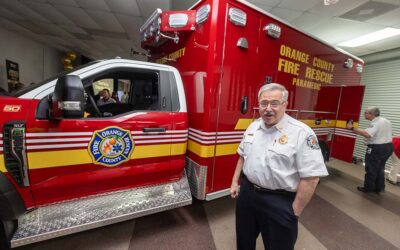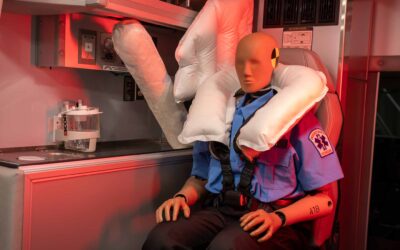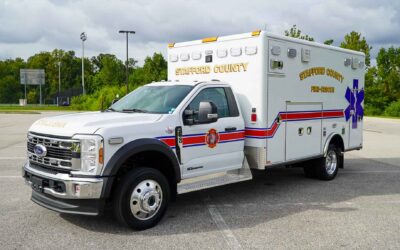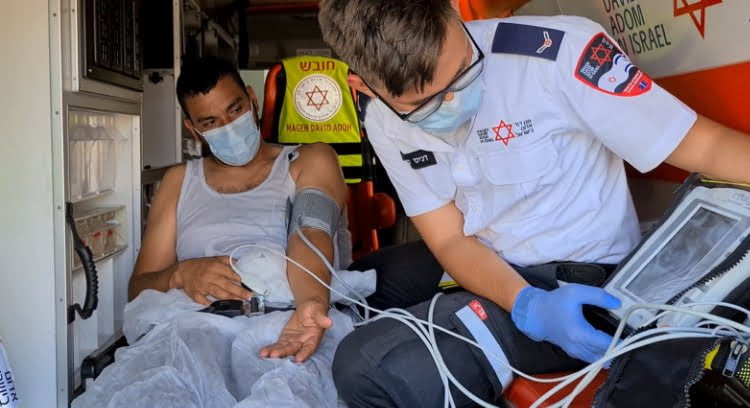
Magen David Adom’s smart ambulance project, in collaboration with Mifal HaPais, is underway. (Photo/Dovrat Mada)
By Dr. Eli Jaffe, Sasi Mohadeb EMT-P, Uriel Goldberg EMT-P
Transferring patients with COVID-19 is a whole new challenge for the prehospital emergency medicine system. These confirmed cases put the medical staff escorting them in danger. Because of that, we have started to operate two-cabin ambulances. On the single cabin ambulances, we installed a designated partition which separates the patient’s cabin from the medical crew’s cabin. That way they are safe from exposure for the entire trip. Most of the patients don’t require any medical care, just observation. In the ambulances where the staff is in a completely separate cabin, the medical observation is inefficient compared to the COVID-19 departments in the hospitals. There they use cameras and designated monitors while the staff is out of the room.
Past featured articles
- REV Ambulance Group Delivers 81 Ambulances to FDNY to Bolster COVID-19 Responses
- Fighting Provider Fatigue
- Life as an Emergency Response Medic in Southern Pottawatomie County (OK)
In order to look after the COVID-19 patients being transferred to hospitals, Magen David Adom (Israeli EMS organization) started operating double-cabin ambulances. Where possible, the transfer will be with an EMT behind the wheel, without the need for an additional EMT. That way we reduce the risk of infection of the staff by 50%. The organization began to connect the patients to monitors that broadcast patient’s condition to remote screens. The device broadcasts heart rate, temperature, a six-lead ECG, blood pressure, saturation and respiratory rate. The device can be disinfected with ethanol without the need for chlorine.
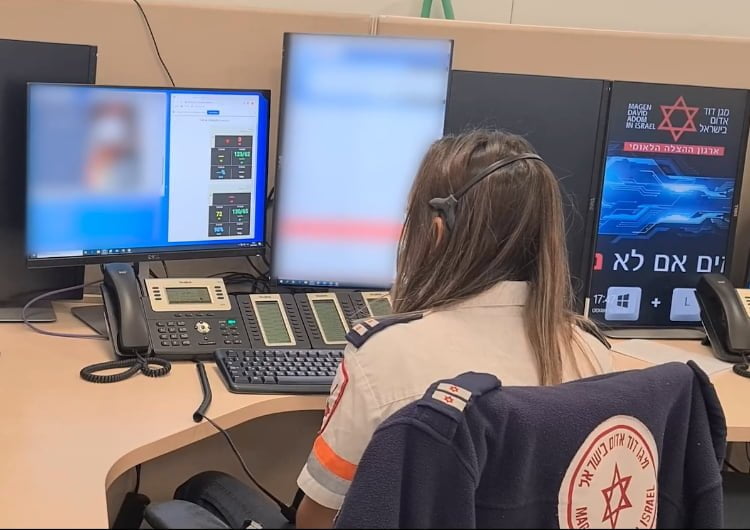
Remote monitoring from the medical dispatch center.
The information gathered by the monitor is broadcasted live to a medical dispatch staffed by senior paramedics. The dispatch can watch and monitor all devices connected to the patient at any given time. Any kind of deterioration in vital signs on the monitor will pop up automatically with a red background and the details of the ambulance, where it came from and where it goes. The paramedic will then call through a radio to the ambulance operator and will guide him to stop and check the patient. The EMT connects the patient to a monitor, for the dispatch to see all vital signs and decides if the patient can be transferred with remote observation. If the patient’s condition is not stable enough, the dispatch can order to transfer the patient with another EMT escorting, or send a mobile ICU to treat the patient.
Since the COVID-19 patient transfers’ numbers continue to rise, a tablet with the monitoring screen will be installed in the driver cabin as well, so that the driver can follow patient’s condition by his or herself. The tablet will not replace the remote medical dispatch; it will be in addition and the dispatch will receive alerts about patient’s deterioration.
Monitoring patients on a BLS ambulance by senior paramedics in the medical dispatch is revolutionary in medical observation. This monitoring could be the future standard for all patients transferred by BLS teams, even when there is an EMT next to the patient. For this to happen, first we will need to train BLS teams to read basic signs on the monitor, recognize arrhythmias and to set a protocol for consultation with the medical dispatch for any life-threatening situation.
Eli Jaffe, MDA, PhD, EMT-P, is the Director of Training, PR, Volunteer Activities, Marketing and International Relations Division, of the Israeli national EMS organization Magen David Adom. He has published books and articles and is an authority in the fields of emergency medicine and medical management, and is also one of the leading researchers in Israel in the field of volunteers and the prevention of PTSD. Dr. Jaffe is a well-known lecturer in the Israeli universities. Reach him at [email protected].
Sasi Mohadeb, EMT-P, is the Director of New Media and is responsible for implementing innovative medical technology upgrades at Magen David Adom, Israel’s National EMS Organization.
Uriel Goldberg, EMT-P, is a paramedic and has been at Magen David Adom, Israel’s National EMS organization, and Red Cross society, for 10 years. Throughout his time at MDA, he has worked held a wide variety of positions including, instructor, EMT-B, EMT-P and a supervisor in the national medical control center.
Today, he serves as the organizations public relations & diplomacy manager, working every day to ensure that communities all over the world learn about MDA’s lifesaving work in Israel and globally. He can be reached at [email protected].

